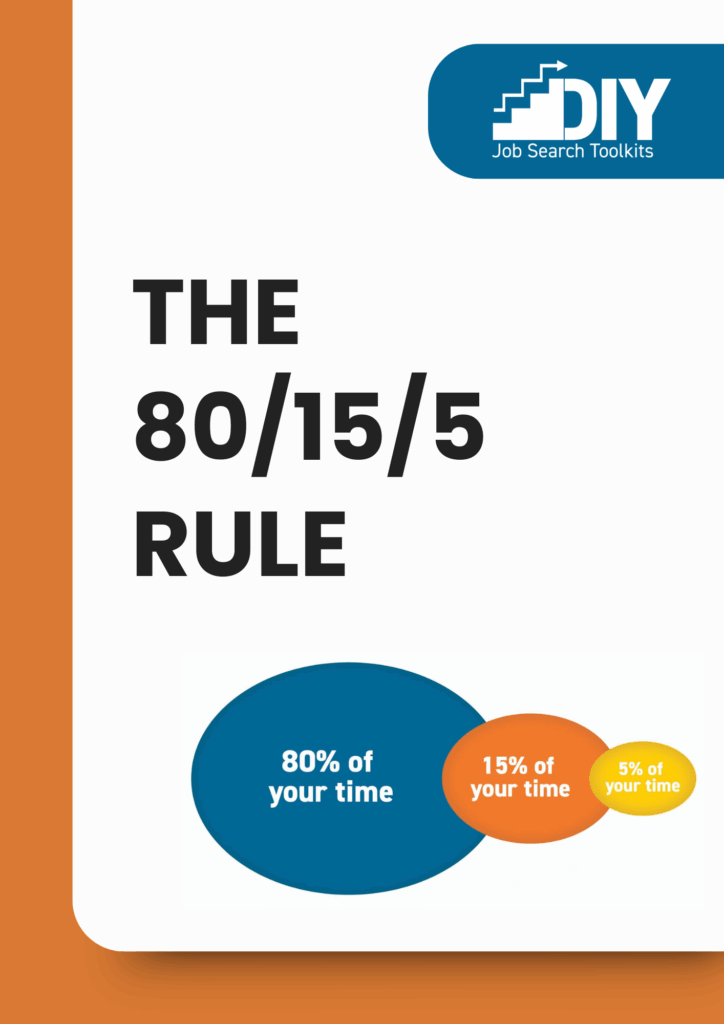Want to Look Like a Problem-Solver? Have a Job Search Strategy.
If you’re in the job market, your strategy isn’t just about finding a job, it’s about showing employers how you think.
The way you approach your search reflects how you’ll approach your work.
Are you thoughtful? Focused? Proactive?
Or are you just applying to everything and hoping something lands?
In this market, guessing isn’t a strategy. Structure is.

The 7 Pillars of a Smart Job Search
The Job Search Strategy Toolkit outlines 7 core stages that turn chaos into a plan:
- Clarify Your Career Path
- Build Your Personal Brand & Online Presence
- Expand Your Network
- Search, Apply, and Stand Out
- Ace the Interview
- Evaluate Offers and Make Your Move
- Start Strong and Grow Your Career
Each one reinforces your ability to think ahead, communicate clearly, and act with purpose, exactly what hiring managers are looking for.
Use the 80/15/5 Rule to Focus Your Time
The 80/15/5 Rule helps you focus on what actually gets results:
- 80% of your time: Networking and having real conversations
- 15%: Targeted, high-quality applications
- 5%: Outreach to recruiters and staffing firms
Why this works:
Networking isn’t just about job leads.
It gives you:
- A clearer read on the market
- Language to describe your value
- Insight into what’s trending in your industry
- Warm intros instead of cold applications
Example weekly goals:
- Schedule 3 networking conversations
- Submit 5 tailored applications
- Reach out to 1–2 recruiters or agencies
Daily breakdown:
- Monday: Draft outreach emails
- Tuesday: Apply to two jobs
- Wednesday: Research and connect with a recruiter
- Thursday: Follow up with this week’s contacts
- Friday: Track progress, adjust plan
Talking About Yourself is Part of the Strategy
If you can’t talk about who you are and the value you bring clearly, confidently, and concisely, then you’ll lose people fast.
Strategy means:
- Having a sharp intro you can use in conversations, interviews, or networking
- Knowing how to position your skills in a way that solves real problems
- Practicing your story until it sounds like you and not a script
Your ability to speak about your work isn’t soft. It’s critical.
Follow-Up is Where Most People Drop the Ball
You sent the application. You had the coffee chat. Now what?
Too many people ghost their own progress by failing to follow up.
Strategic job seekers:
- Have a cadence for following up on applications (3–5 days later, and again after a week or two)
- Check in with new contacts after an intro call and again after 30–45 days
- Use reminders and tools to stay visible without being annoying
It’s not about chasing. It’s about staying relevant.
Stay Informed. Stay Sharp.
Hiring managers want people who are paying attention.
If you want to stand out, you need to know what’s happening around you:
- Follow industry news
- Read up on tech, tools, and trends that are shaping your field
- Join conversations on LinkedIn or relevant groups
- Use what you learn to show you’re plugged in and proactive
This isn’t “extra credit.” It’s the baseline now.
